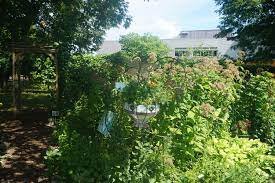Butterflies are one of the most beautiful and delicate creatures in the world. They are important pollinators and attractors of bees and other insects. If you want to create a butterfly habitat, it’s important to plant the right types of flowers that attract caterpillars. Here are some of the most popular plants that attract caterpillars.
Milkweed: This is one of the best plants that attract caterpillars. Monarch butterflies lay their eggs on milkweed plants, so it’s important to have these around if you want to attract monarchs. Milkweed has a milky sap that is toxic to many animals, so caterpillars that feed on the leaves build up a tolerance to the toxic chemicals. This makes them unpalatable to predators like birds.
Goldenrod: This is another plant that is important for butterflies. Goldenrods provide nectar for adult butterflies and are essential for the survival of some species. For example, the Wavy-Lined Emerald and the Goldenrod Hooded Owlet both depend on goldenrods for their life cycle.
Parsley: This is a host plant for the Black Swallowtail butterfly. This butterfly lays its eggs on the parsley plant, and the caterpillars feed on the leaves. The parsley plant provides a safe haven for the caterpillars until they are ready to pupate. This is a great plant for beginners because it’s easy to grow and can be used as a garnish in cooking.
Dill: This is another host plant for the Black Swallowtail butterfly. Dill is a member of the parsley family, so it has similar properties to parsley. Dill is also a popular herb in cooking, so it’s a great way to attract butterflies while also having a useful herb in your garden.
Fennel: This is a host plant for the Anise Swallowtail butterfly. This butterfly lays its eggs on the fennel plant, and the caterpillars feed on the leaves. Fennel is also a popular herb in cooking, so it’s a great way to attract butterflies while also having a useful herb in your garden.
Aster: This is one of the best plants for attracting a variety of butterflies. Asters bloom in late summer and fall, when many other plants have lost their flowers. They provide nectar for adult butterflies and are also a host plant for some species.
Creating a butterfly habitat is easy and rewarding. By planting the right types of flowers, you can attract a variety of different butterflies and help to support their populations. It’s important to remember that you don’t need a large garden or a lot of space to create a butterfly habitat. Even a small balcony or container garden can provide a home for these beautiful creatures.
